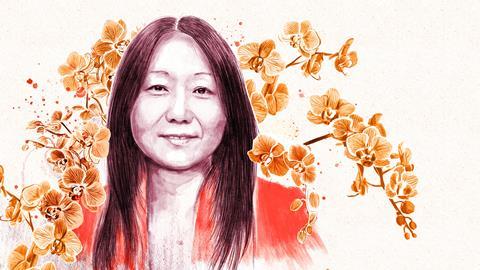The flexible electronics maven talks about science’s biggest problem, orchids and Campbell’s chicken noodle soup
Zhenan Bao is department chair and K K Lee professor of chemical engineering at Stanford University in the US. She is a pioneer in the field of flexible electronics and co-founded two Silicon Valley start-ups: PyrAmes, which is developing non-invasive blood pressure monitors; and flexible electronic material company, C3 Nano. She was speaking to Patrick Walter at Iupac’s 47th general assembly in Paris.
George Whitesides is one of my scientific heroes. I have always been so inspired by how he is able to apply chemistry in such creative, smart ways to different, broad areas. The interdisciplinary nature of his work is what I love. And he doesn’t stay with just one subject all his career. He is not afraid to go into new areas. I also really admire the chemistry that Bert Meijer develops – how he really understands self-assembly and supramolecular chemistry, and applies it to stimulus responsive materials.
I don’t have a lot of hobbies – I have two kids, so they keep me very busy. But when I have time I enjoy growing Phalaenopsis orchids – but not professionally. Initially they always ended up dying because I watered them too much. Now that I know this issue I only water them twice a month and they grow much better.
I enjoy hiking and also cooking with my children. We go hiking in the redwoods at Big Basin in California. There are nice trails there. My kids like American food, and they like to follow recipes to cook dishes. They’re at the stage where they can basically take a recipe and cook on their own. I think I enjoyed chemistry when I was in high school because I also enjoyed cooking, so I do see the connection between the two.
When I was setting up my first group I wish I had been more confident and more daring. At the start of your career, you might think your work is not as good as you really are and then later, with more success, you become more confident. Over the years, I’ve grown to be confident in how I approach science.
I don’t get a lot of time for reading but read Bad Blood [the tale of the rise and fall of blood-testing start-up Theranos] last Christmas. That was my reading for the year. The next one on my list is The Circadian Code that someone recommended to me. It looks at bodily rhythms and how they impact disease and even the treatment of disease. I’m planning on reading during my next vacation break.
My favourite comfort food is Campbell’s chicken noodle soup. If it’s homemade food, I like to make a beef noodle soup.
Going from Bell Labs to academia actually felt quite natural. Bell Labs wasn’t like the typical industry lab – it’s more like a research lab. They want people to do cutting-edge research, and publish in high impact journals. So at the time, we just had to dream big and we didn’t have to worry about making money for the company.
When I was at Bell Labs it was just the beginning of flexible electronics. I worked on developing the important foundational concepts – molecular design concepts for organic semiconductors. And we also made the first flexible electronic paper driven by flexible organic transistors with materials I developed.
There are many, many cities that I like out there. Paris is a wonderful place and I also really enjoy going to Zurich. In Asia, I love visiting Tokyo or Singapore. I always like going to Korea too and, of course, I’m travelling around China all the time.
In China, I think my favourite city is Nanjing. It’s my hometown. It’s quieter than some of the other cities and it’s a beautiful place. Nanjing has changed so much since I left China in 1990 though. The street that I grew up on has the same address but it is completely different now – new buildings and even new subway lines. In 1990, there was only one high-rise building in Nanjing [the Jinling Hotel]. It is still there. And of course the historical sites are still there.
The biggest threat I see to science is the way funding is structured. It’s guiding the direction of research more and more instead of letting scientists have some room to dream, to think about things that are out there. Now there are quite a lot of big funding opportunities, but people are so busy chasing those directions that it leaves no time – or funding – to explore risky or crazy ideas that might lead to big breakthroughs.













No comments yet